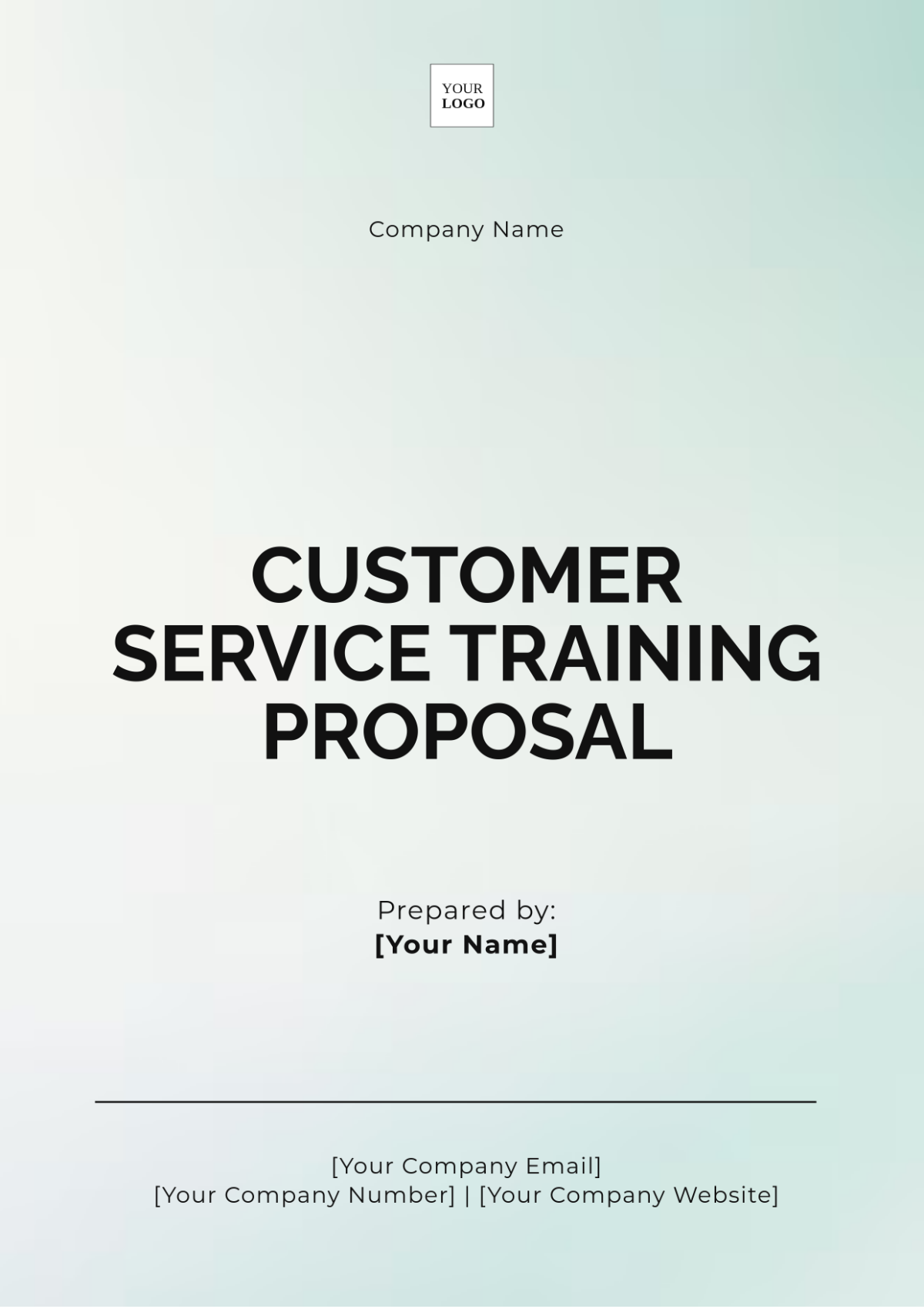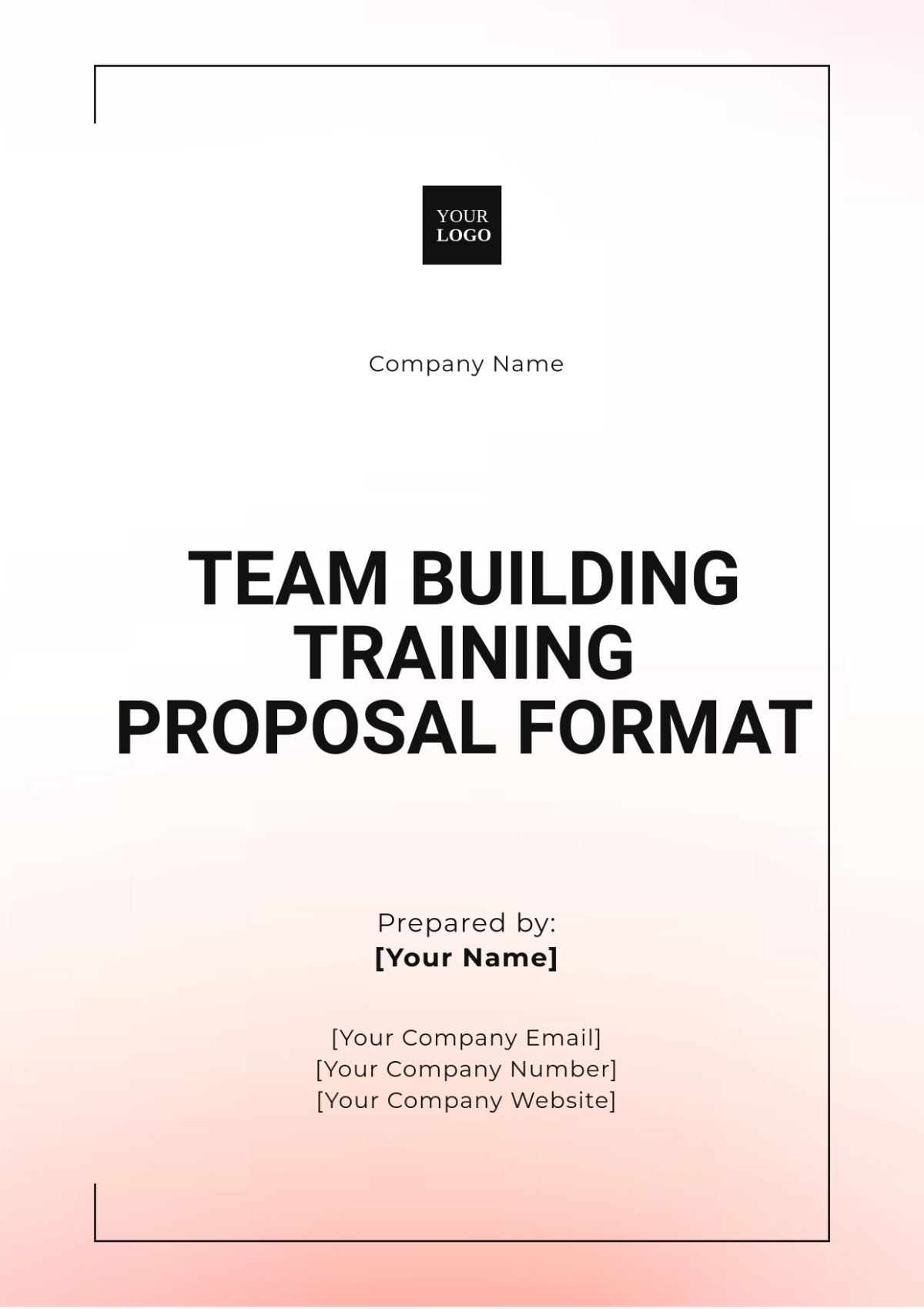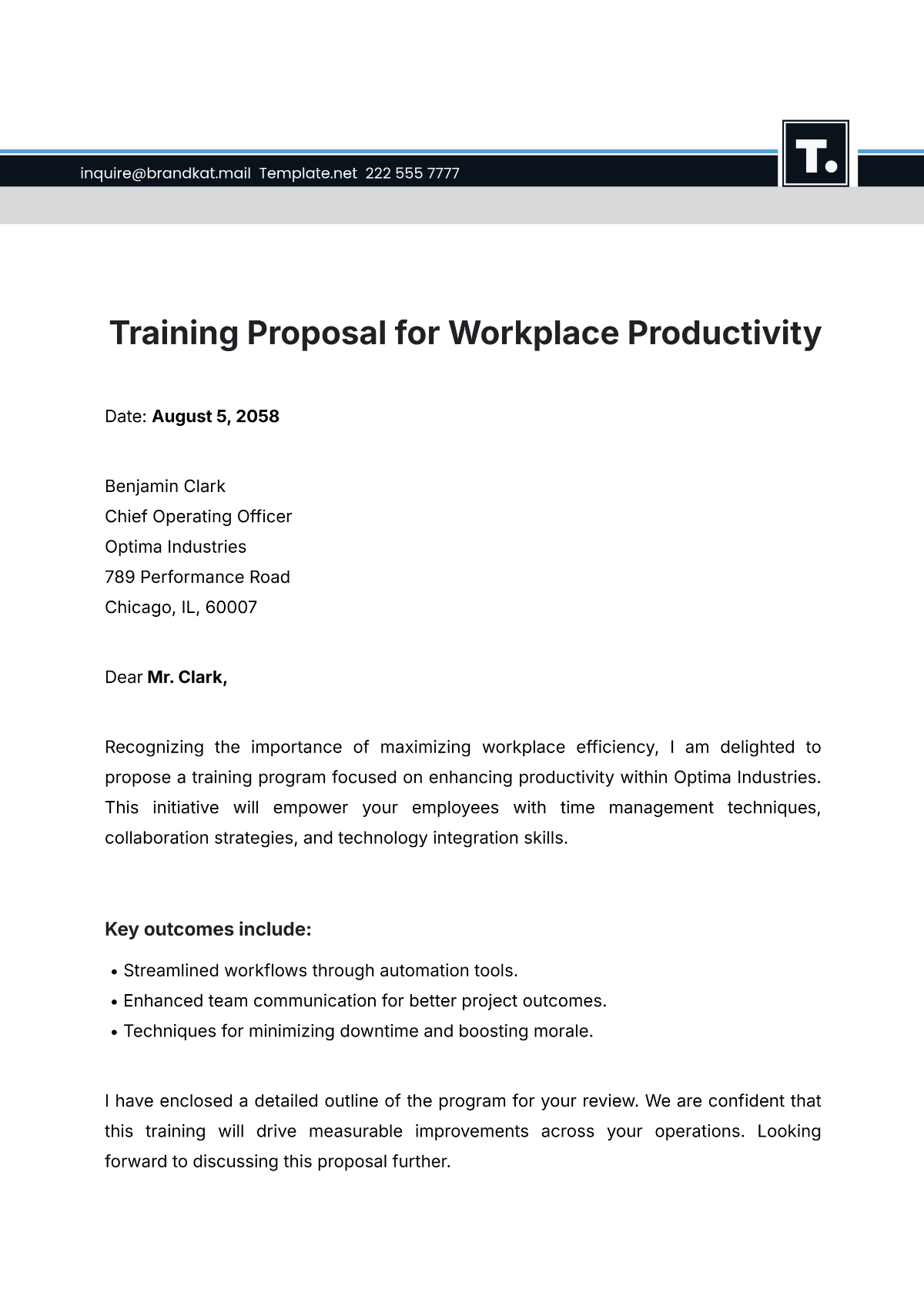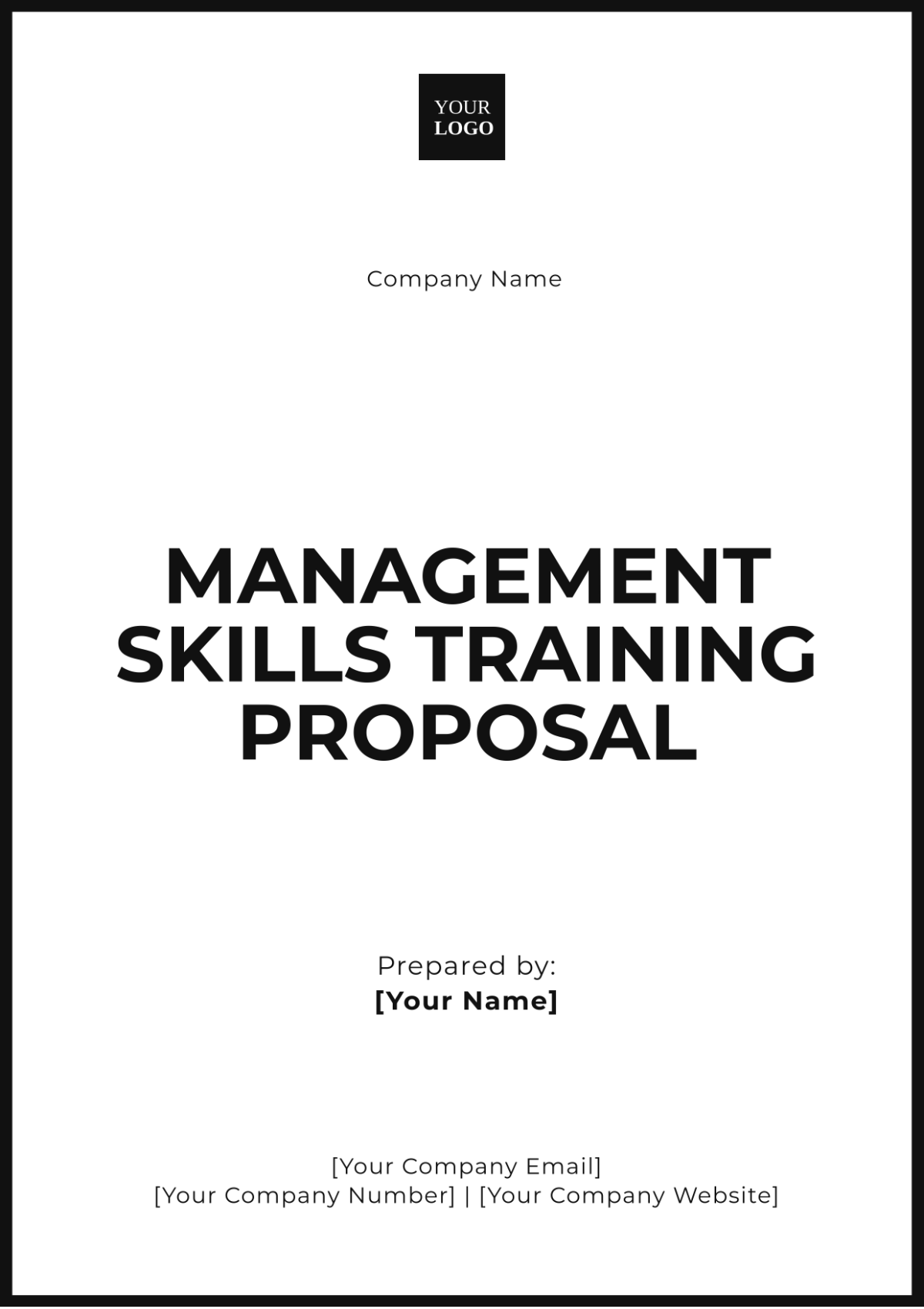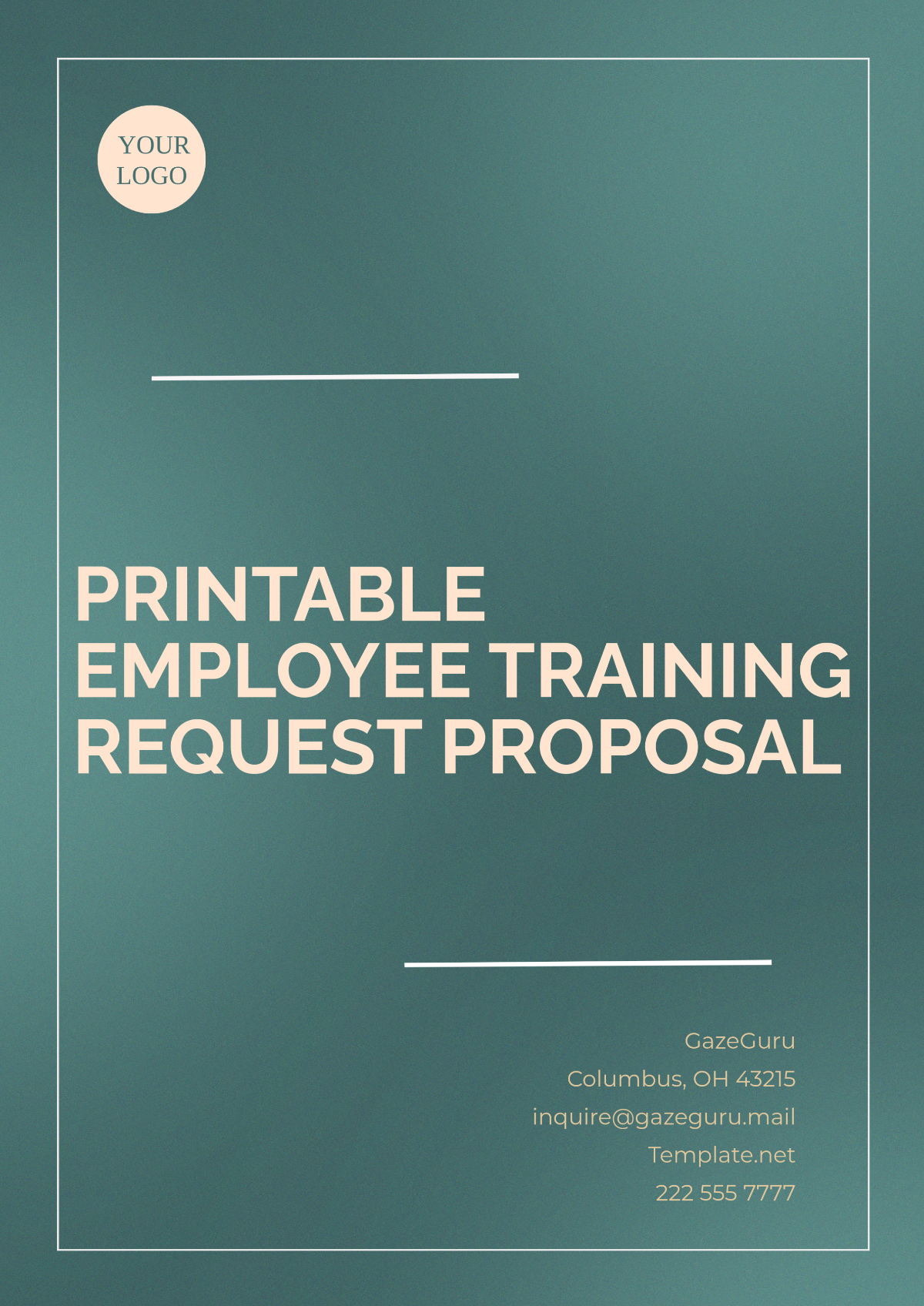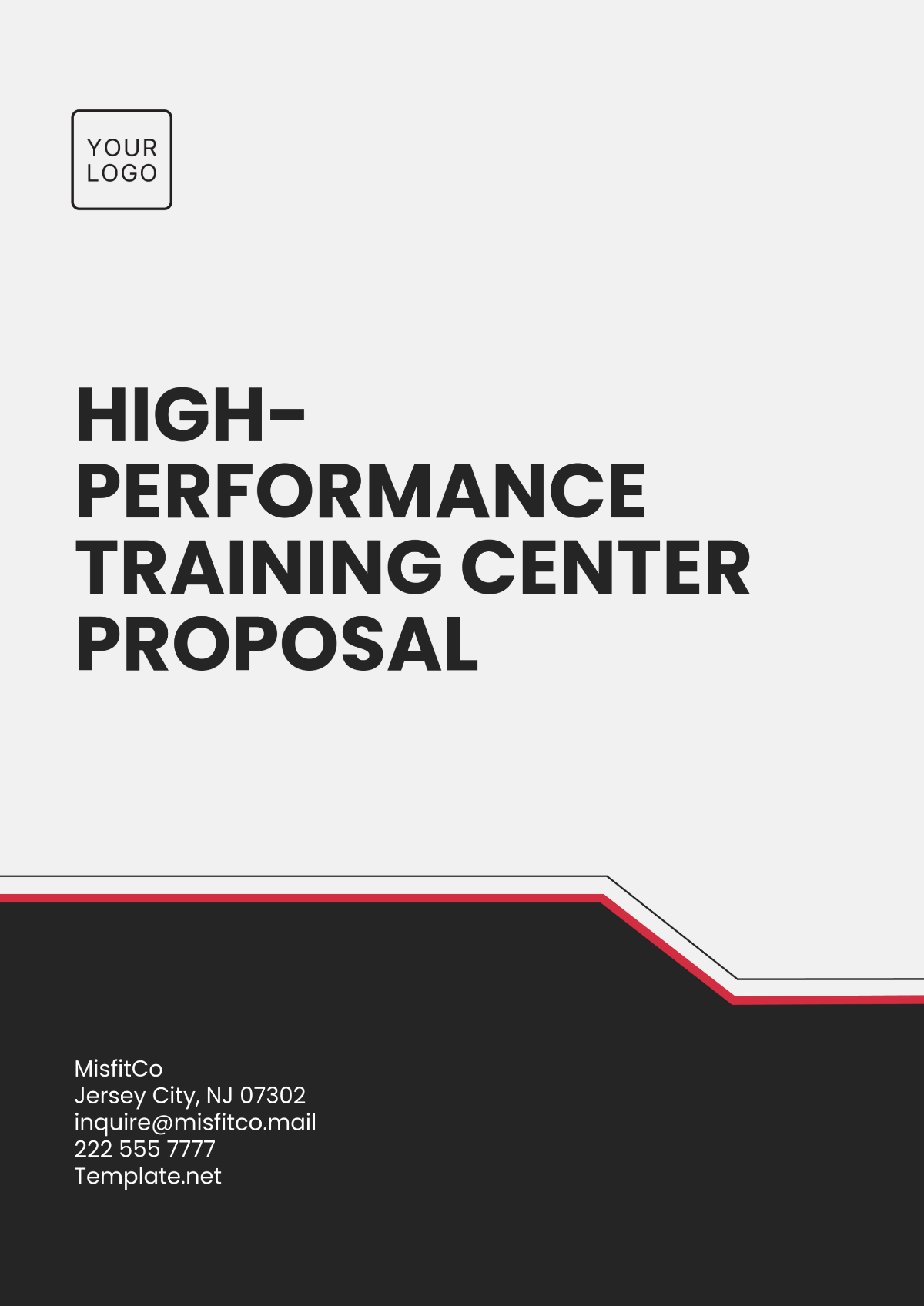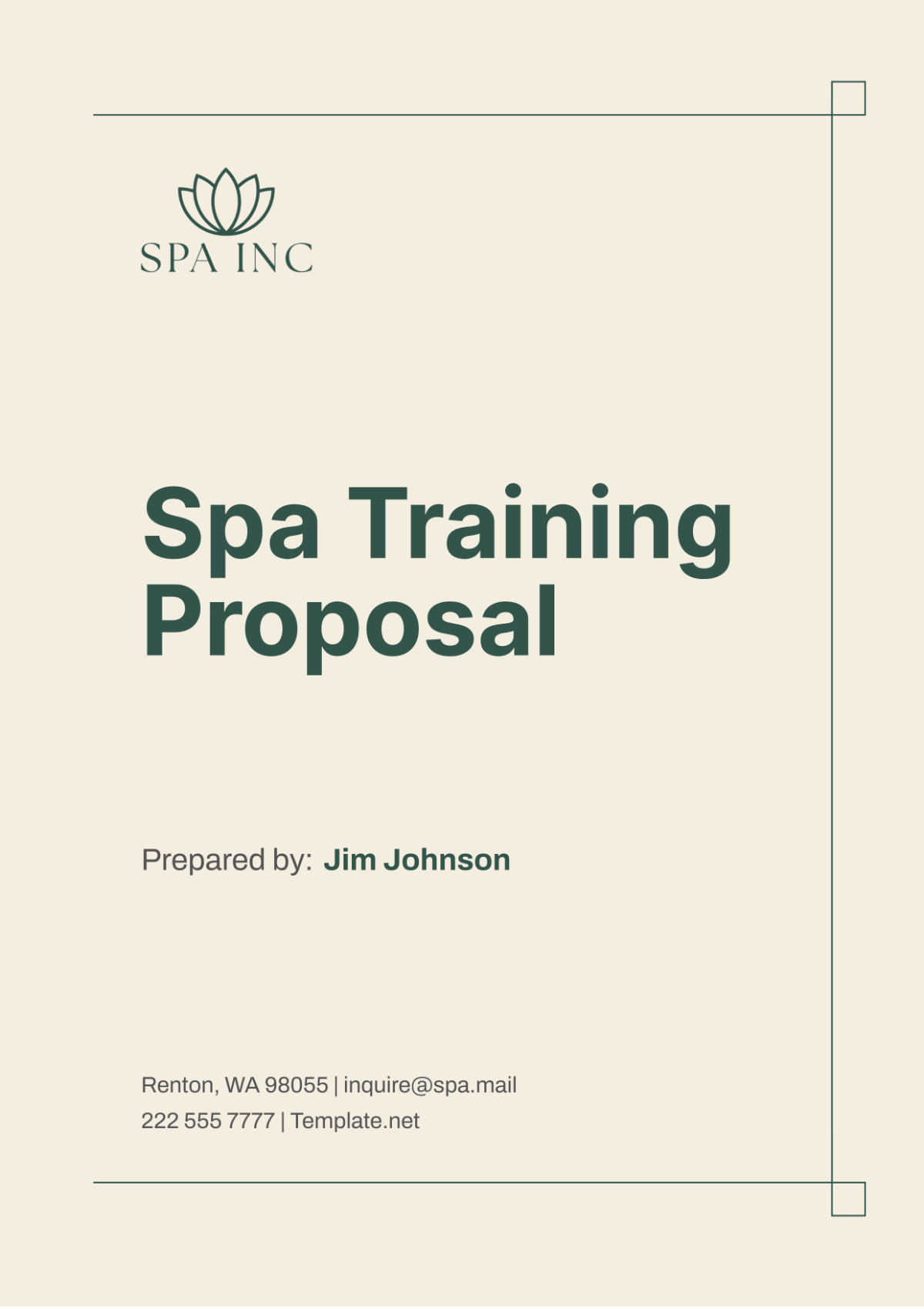Performance Improvement Training Proposal
Prepared by: [Your Name]
Company: [Your Company Name]
Date: [Date]
I. Introduction
The purpose of this Performance Improvement Training Proposal is to provide a comprehensive framework aimed at enhancing specific skills, productivity, and overall performance levels within our organization, [Your Company Name]. By addressing identified performance gaps through targeted training programs, we seek to foster a culture of continuous learning and professional growth. This document outlines the proposed training methodologies, objectives, expected outcomes, and other critical factors necessary for the successful implementation of this initiative.
The overarching goal is to ensure that employees at all levels are equipped with the necessary skills to adapt to evolving industry trends, enhance operational efficiency, and contribute to the company's long-term success. Through the implementation of structured training programs, the organization aims to significantly improve its competitive position in the marketplace while fostering a motivated, engaged workforce.
II. Needs Assessment
A. Identifying Performance Gaps
To identify areas requiring improvement, a thorough needs assessment was conducted. The evaluation involved employee surveys, performance reviews, and consultations with department heads. The primary areas identified include:
Time management and organizational skills: Employees across departments are facing challenges in prioritizing tasks, resulting in missed deadlines and project delays.
Technical competency in emerging technologies: Many employees have limited familiarity with recent software advancements, affecting the company's ability to stay ahead in innovation.
Communication and teamwork efficiency: Poor collaboration and communication practices have led to misunderstandings and inefficiencies in cross-departmental projects.
B. Data Collection Methods
The data collection process utilized a combination of quantitative and qualitative methods to ensure a comprehensive understanding of the performance gaps. These methods included:
Surveys and Questionnaires: A company-wide survey was distributed to gather employees’ feedback on their current skill levels and areas where they feel improvement is needed.
Observations and Interviews: Managers conducted one-on-one interviews with team members to identify challenges and improvement opportunities based on observed performance.
Performance Metrics Analysis: Key performance indicators (KPIs), such as project completion rates, error rates, and customer feedback, were analyzed to pinpoint areas of inefficiency.
III. Objectives
A. Short-Term Goals
The short-term objectives of the training program are designed to address immediate performance deficits and quick-win opportunities. These goals will focus on:
Improving time management strategies: Within three months, employees will be trained in prioritization techniques and productivity tools to ensure more efficient task completion.
Enhancing technical skills: Employees will gain proficiency in specific software tools, such as AutoCAD and Tableau, within the next six months, enabling them to contribute more effectively to technical projects.
B. Long-Term Goals
The long-term objectives are centered around sustainable development and continuous improvement within the organization. These goals include:
Embedding a culture of continuous learning: Over the next two years, we aim to establish a framework that encourages employees to regularly upgrade their skills, especially in adopting new technologies and best practices.
Enhancing leadership skills: A key objective is to improve leadership competencies across all management levels, focusing on decision-making, conflict resolution, and team motivation.
IV. Training Plan
A. Training Programs
To address the identified needs, a series of training programs have been developed. These include:
Program | Methodology | Duration |
|---|---|---|
Time Management Workshop | Interactive Workshops | 2 Days |
Technical Skills Development | Online Tutorials and Practice Labs | Ongoing |
Communication Enhancement | Group Activities and Role-Playing | 1 Day every quarter |
B. Methodologies
The training methodologies adopted will include a blend of theoretical instruction and practical application to cater to different learning styles. The key methodologies include:
Workshops and Seminars: Facilitators will lead hands-on workshops to provide practical skills and real-world scenarios, ensuring participants can immediately apply what they've learned.
Online Modules and Resources: A library of digital resources will be available for employees to access self-paced learning modules, covering a range of topics such as cloud computing, data analysis, and time management.
Peer and Mentorship Programs: Experienced team members will mentor newer employees, fostering a collaborative learning environment and enhancing teamwork across departments.
V. Evaluation
A. Monitoring and Feedback
The evaluation process is integral to the success of the training programs. Regular monitoring of trainees' progress will ensure that learning objectives are met. The evaluation process will include:
Pre- and post-assessment tests: These tests will be administered to measure knowledge and skill improvement before and after the training sessions.
Feedback forms and surveys: Employees will provide feedback on the training content and delivery, allowing for continuous improvement of the training programs.
Performance metric analysis: Key performance metrics, such as increased task completion rates and improved quality of work, will be used to measure the effectiveness of the training.
B. Success Criteria
The success of the training program will be measured against specific criteria, including:
Improved employee performance metrics: Measurable improvements in time management, technical skills, and communication efficiency.
Positive feedback and satisfaction levels: High satisfaction scores from trainees, indicating the training was relevant, engaging, and useful.
Achievement of setting short-term and long-term goals: Monitoring whether the training programs successfully met the predefined goals within the set timelines.
VI. Budget
The proposed budget for the training initiative has been designed to ensure cost-effectiveness while maximizing the impact on employee performance. The key components of the budget include:
Item | Estimated Cost |
|---|---|
Training Materials and Resources | $10,000 |
External Trainers and Consultants | $15,000 |
Training Venue and Logistics | $5,000 |
Evaluation and Feedback Tools | $3,000 |
The budget also includes a contingency for unforeseen expenses that may arise during the implementation of the training programs.
VII. Conclusion
In conclusion, the Performance Improvement Training Proposal outlines a strategic approach to closing performance gaps and equipping our workforce with the essential skills required for future success. By implementing the outlined training programs and methodologies, we anticipate significant improvements in productivity, employee satisfaction, and overall performance. The commitment to continuous evaluation and feedback will ensure that the program remains aligned with organizational goals and delivers measurable outcomes.
We are confident that this proposal will foster an environment of growth and learning, ultimately positioning [Your Company Name] for continued success in an ever-evolving business landscape.

